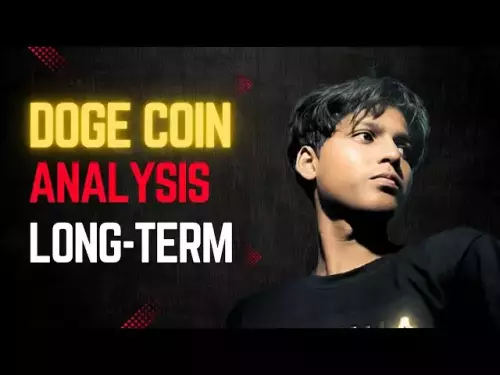-
 Bitcoin
Bitcoin $112000
1.27% -
 Ethereum
Ethereum $4464
4.15% -
 XRP
XRP $2.867
2.86% -
 Tether USDt
Tether USDt $1.001
0.04% -
 BNB
BNB $859.7
1.52% -
 Solana
Solana $210.5
5.20% -
 USDC
USDC $0.9999
0.01% -
 Dogecoin
Dogecoin $0.2185
3.84% -
 TRON
TRON $0.3410
1.36% -
 Cardano
Cardano $0.8404
3.84% -
 Chainlink
Chainlink $23.80
4.08% -
 Hyperliquid
Hyperliquid $45.96
4.22% -
 Ethena USDe
Ethena USDe $1.001
0.02% -
 Sui
Sui $3.382
4.80% -
 Bitcoin Cash
Bitcoin Cash $591.2
2.62% -
 Stellar
Stellar $0.3652
1.68% -
 Avalanche
Avalanche $25.35
7.33% -
 Cronos
Cronos $0.2796
10.18% -
 Hedera
Hedera $0.2213
4.12% -
 UNUS SED LEO
UNUS SED LEO $9.520
-0.20% -
 Litecoin
Litecoin $112.9
2.75% -
 Toncoin
Toncoin $3.181
1.89% -
 Shiba Inu
Shiba Inu $0.00001252
2.08% -
 Polkadot
Polkadot $3.882
3.71% -
 Uniswap
Uniswap $9.714
3.34% -
 Bitget Token
Bitget Token $5.004
0.70% -
 World Liberty Financial
World Liberty Financial $0.2185
-1.32% -
 Dai
Dai $0.9999
0.01% -
 Monero
Monero $269.1
3.07% -
 Aave
Aave $326.0
5.80%
What is a "community-owned" NFT?
Community-owned NFTs enable collective governance through DAOs, allowing decentralized decision-making and shared benefits via blockchain-based transparency and smart contracts.
Sep 03, 2025 at 10:01 pm
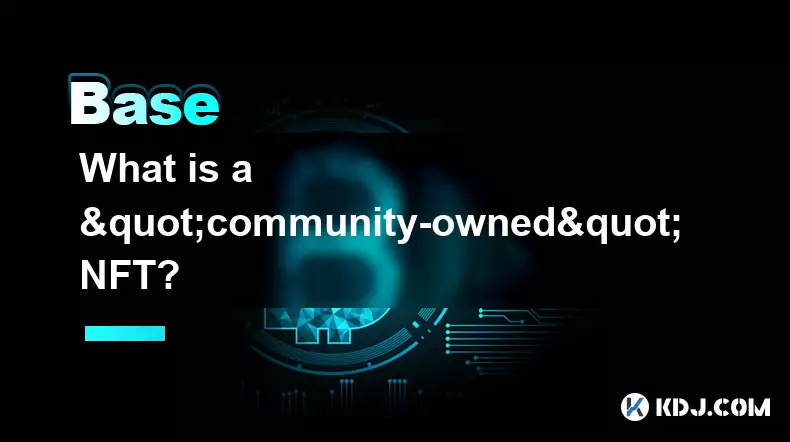
Understanding Community-Owned NFTs
1. A community-owned NFT refers to a non-fungible token that is collectively held and governed by a decentralized group rather than a single individual or centralized entity. Ownership is typically managed through a smart contract on a blockchain, with decision-making authority distributed among members of a DAO (Decentralized Autonomous Organization). Each member may hold governance tokens that grant them voting rights over key actions such as selling, licensing, or modifying the NFT.
2. These NFTs often originate from high-profile digital artworks, collectibles, or in-game assets that attract broad interest. Instead of one person purchasing the asset, a group pools funds via a token sale or crowdfunding mechanism. In return, contributors receive governance or share tokens representing their stake in the collective ownership. The underlying blockchain ensures transparency in both ownership records and transaction history.
3. Smart contract logic enforces the rules of engagement, including voting thresholds, fund distribution, and transfer conditions, minimizing the need for intermediaries. This structure promotes trustless collaboration and enables geographically dispersed participants to jointly manage digital assets. Projects like this challenge traditional models of ownership and open new avenues for collaborative investment in digital culture.
4. The rise of community-owned NFTs reflects a broader shift toward decentralization in digital asset management. By distributing control, these models reduce the risk of unilateral decisions and increase inclusivity. They also introduce new dynamics in how value is created and shared, as appreciation in the NFT’s market price benefits all stakeholders proportionally based on their contribution.
How Governance Works in Community NFT Projects
1. Governance in community-owned NFTs is typically executed through on-chain voting mechanisms. Proposals—such as listing the NFT for sale, granting usage rights, or donating proceeds to charity—are submitted to the community. Members then vote using their governance tokens, with each vote weighted by token holdings or capped to prevent dominance by large stakeholders.
2. Some projects implement time-locked proposals to prevent rushed decisions, allowing members to review and debate before voting concludes. The outcome is automatically executed by the smart contract if the proposal meets the predefined approval threshold, such as a 60% majority.
3. Transparency is a core feature—every vote, transaction, and balance change is recorded immutably on the blockchain, accessible to all participants. This level of accountability fosters trust and reduces the potential for fraud or mismanagement. Tools like Snapshot or Tally are often integrated to streamline the voting process without requiring gas fees for each vote.
4. Dispute resolution is usually predefined in the smart contract or handled through community consensus. In some cases, a multisig wallet controlled by elected delegates may act as a safeguard for high-value operations, adding a layer of security without compromising decentralization.
Benefits and Challenges of Shared Ownership
1. One major advantage of community-owned NFTs is democratized access to premium digital assets. High-value NFTs that would otherwise be unaffordable to most individuals become accessible through fractional investment. This model also aligns incentives across a broad base of supporters, encouraging active participation in the asset’s promotion and stewardship.
2. The collective nature of ownership can enhance the cultural significance of an NFT, transforming it into a symbol of community identity rather than just a speculative asset. Projects like these often foster strong online communities, with members engaging in creative collaborations, merchandising, or even launching spin-off content.
3. However, challenges exist. Decision-making can become slow or contentious, especially when opinions diverge on the NFT’s direction. Voter apathy is another issue—many token holders may not participate in governance, leading to outcomes influenced by a small, active minority.
4. Legal and regulatory uncertainty also looms large. Depending on jurisdiction, a community-owned NFT structured as an investment vehicle could be classified as a security, triggering compliance requirements. Smart contract vulnerabilities pose additional risks, as bugs or exploits could result in loss of funds or unauthorized transfers.
Frequently Asked Questions
What happens if a community-owned NFT is sold?Proceeds from the sale are distributed among token holders according to their ownership share. The distribution is executed automatically via the smart contract, ensuring transparency and reducing the risk of misappropriation.
Can I sell my share in a community-owned NFT?Yes, if the governance tokens are tradable on a secondary market. Many projects issue ERC-20 or similar tokens that can be freely traded on decentralized exchanges, allowing participants to exit their position at any time.
How are disputes over usage rights resolved?Disputes are typically addressed through the project’s governance framework. Members submit proposals for resolution, and voting determines the outcome. Some projects designate trusted arbitrators or use decentralized dispute resolution platforms.
Are community-owned NFTs more secure than individually owned ones?Security depends on the smart contract’s design and audit status. While shared ownership reduces the risk of unilateral theft, it introduces complexity in governance and execution. A well-audited contract with clear rules enhances security for all stakeholders.
Disclaimer:info@kdj.com
The information provided is not trading advice. kdj.com does not assume any responsibility for any investments made based on the information provided in this article. Cryptocurrencies are highly volatile and it is highly recommended that you invest with caution after thorough research!
If you believe that the content used on this website infringes your copyright, please contact us immediately (info@kdj.com) and we will delete it promptly.
- Crypto Lawyer Clears the Air: XRP vs. RLUSD in Ripple's Payment Ecosystem
- 2025-09-03 23:05:14
- Max Keiser, El Salvador, and Bitcoin: A Budding Bromance?
- 2025-09-03 22:25:15
- SHIB vs. DOGE: Navigating the Meme Coin Maze in 2025
- 2025-09-03 23:25:15
- XRP Cash Flow: Turning $100,000 into a Daily Stream?
- 2025-09-03 22:45:12
- ETH Price, LTC, SHIB, DOT, and Investor Favor: What's Hot in Crypto?
- 2025-09-03 23:45:12
- Plastic Passport: Singapore's Bold Step Towards Verifiable Recycling
- 2025-09-03 23:30:12
Related knowledge

What is "backtesting" a crypto trading strategy?
Sep 03,2025 at 10:55am
Understanding Backtesting in Crypto TradingBacktesting is the process of evaluating a trading strategy by applying it to historical market data. Trade...

What is a "crypto trading bot" and do they work?
Sep 02,2025 at 04:19pm
Understanding Crypto Trading Bots1. A crypto trading bot is a software application designed to automate the process of buying and selling cryptocurren...

What is a "copy trading" platform?
Sep 02,2025 at 07:00pm
Understanding Copy Trading in the Cryptocurrency Space1. A copy trading platform allows users to automatically replicate the trades of experienced inv...
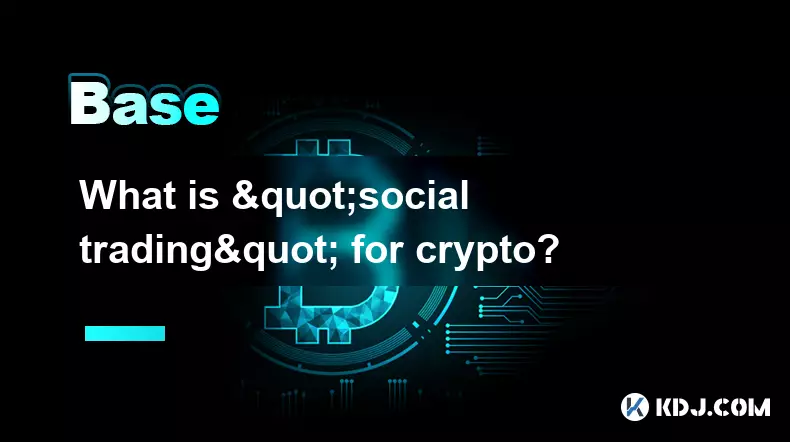
What is "social trading" for crypto?
Sep 03,2025 at 09:00pm
Understanding Social Trading in the Cryptocurrency Space1. Social trading refers to a method where investors observe, follow, and automatically replic...
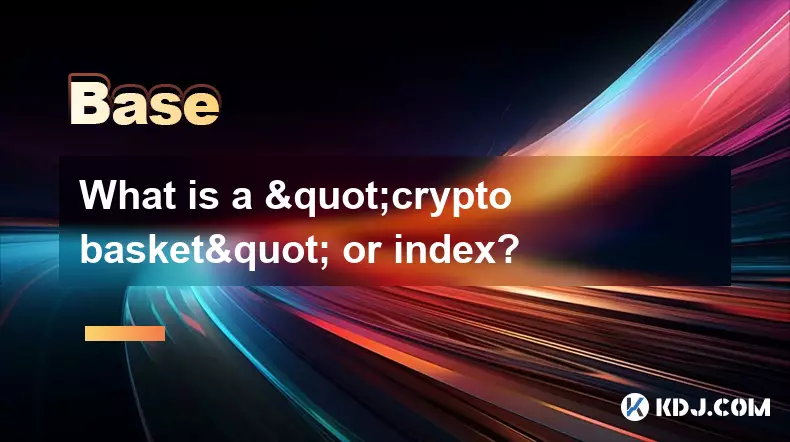
What is a "crypto basket" or index?
Sep 03,2025 at 07:01am
Understanding Crypto Baskets and Their Role in Digital Asset Investment1. A crypto basket refers to a curated collection of multiple cryptocurrencies ...
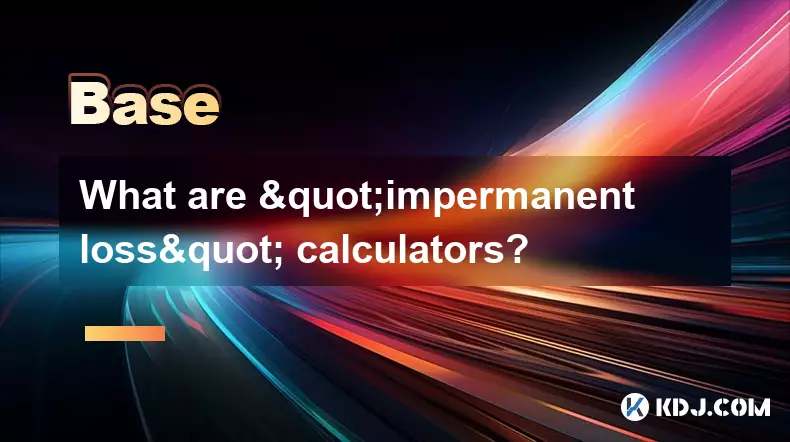
What are "impermanent loss" calculators?
Sep 03,2025 at 12:00pm
Understanding Impermanent Loss in Decentralized Finance1. Impermanent loss is a phenomenon that affects liquidity providers in decentralized exchanges...

What is "backtesting" a crypto trading strategy?
Sep 03,2025 at 10:55am
Understanding Backtesting in Crypto TradingBacktesting is the process of evaluating a trading strategy by applying it to historical market data. Trade...

What is a "crypto trading bot" and do they work?
Sep 02,2025 at 04:19pm
Understanding Crypto Trading Bots1. A crypto trading bot is a software application designed to automate the process of buying and selling cryptocurren...

What is a "copy trading" platform?
Sep 02,2025 at 07:00pm
Understanding Copy Trading in the Cryptocurrency Space1. A copy trading platform allows users to automatically replicate the trades of experienced inv...

What is "social trading" for crypto?
Sep 03,2025 at 09:00pm
Understanding Social Trading in the Cryptocurrency Space1. Social trading refers to a method where investors observe, follow, and automatically replic...

What is a "crypto basket" or index?
Sep 03,2025 at 07:01am
Understanding Crypto Baskets and Their Role in Digital Asset Investment1. A crypto basket refers to a curated collection of multiple cryptocurrencies ...

What are "impermanent loss" calculators?
Sep 03,2025 at 12:00pm
Understanding Impermanent Loss in Decentralized Finance1. Impermanent loss is a phenomenon that affects liquidity providers in decentralized exchanges...
See all articles























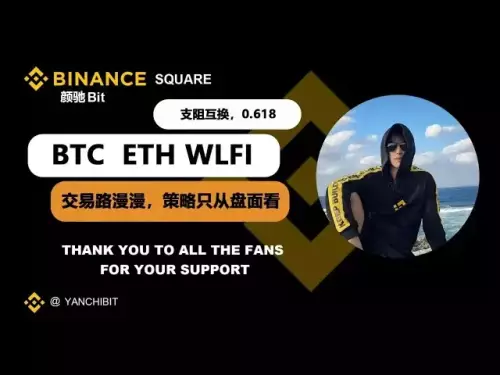

![Litecoin Price Prediction [LTC Crypto Price News] Litecoin Price Prediction [LTC Crypto Price News]](/uploads/2025/09/03/cryptocurrencies-news/videos/litecoin-price-prediction-ltc-crypto-price-news/68b83c0a82563_image_500_375.webp)
